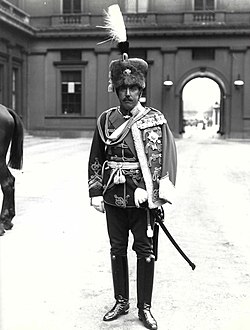The House of Oldenburg
In 1460, Schleswig fell to the Danish royal House of Oldenburg, in the person of Christian I, who inherited not only the Duchy, a Danish fief, but also the County of Holstein-Rendsburg, a Saxe-Lauenburgian subfief within the Holy Roman Empire, following the death of his maternal uncle Adolf I (and VIII as Count of Holstein-Rendsburg). In 1474, Lauenburg's liege lord Emperor Frederick III elevated Christian as Count of Holstein-Rendsburg to Duke of Holstein, thus becoming an immediate imperial vassal (see imperial immediacy). The smaller Holstein-Pinneberg remained a county further ruled by the House of Schauenburg. In 1544, after Christian III's brothers reached majority, they partitioned the Duchies of Holstein (a fief of the Holy Roman Empire) and of Schleswig (a Danish fief) in an unusual way, following negotiations between the brothers and the Estates of the Realm of the duchies, which opposed a factual partition. They determined their youngest brother Frederick for a career as Lutheran administrator of an ecclesiastical state within the Holy Roman Empire. [2]
So the revenues of the duchies were divided in three equal shares by assigning the revenues of particular areas and landed estates to each of the elder brothers, while other general revenues, such as taxes from towns and customs dues, were levied together but then shared among the brothers. The estates, whose revenues were assigned to the parties, made Holstein and Schleswig look like patchwork rags, technically inhibiting the emergence of separate new duchies, as intended by the estates of the duchies. The secular rule in the fiscally divided duchies thus became a condominium of the parties. As dukes of Holstein and Schleswig, the rulers of both houses bore the formal title of "Duke of Schleswig, Holstein, Dithmarschen and Stormarn".
The dynastic name Holstein-Gottorp comes as convenient usage from the technically more correct Duke of Schleswig and Holstein at Gottorp. Adolf, the third son of Duke and King Frederick I and the second youngest half-brother of King Christian III, founded the dynastic branch called House of Holstein-Gottorp, which is a cadet branch of the then royal Danish House of Oldenburg. The Danish monarchs and the Dukes of Holstein-Gottorp listed below ruled both duchies together as to general government, however, collected their revenues in their separate estates. John II the Elder conveniently called Duke of Schleswig-Holstein-Haderslev produced no issue, so no branch emerged from his side.
Similar to the above-mentioned agreement Christian III's youngest son John the Younger gained for him and his heirs a share in Holstein's and Schleswig's revenues in 1564, comprising a third of the royal share, thus a ninth of Holstein and Schleswig as to the fiscal point of view. John the Younger and his heirs, however, had no share in the condominial rule, they were only titular partitioned-off dukes.
The share of John II the Elder, who died in 1580, was halved between Adolf and Frederick II, thus increasing again the royal share by a fiscal sixth of Holstein and Schleswig. [3] As an effect the complicated fiscal division of both separate duchies, Holstein and Schleswig, with shares of each party scattered in both duchies, provided them with a condominial government binding both together, partially superseding their legally different affiliation as Holy Roman and Danish fiefs.
| Ruler | Born | Reign | Death | Part | Consort | Notes | |
|---|---|---|---|---|---|---|---|
| Christian I (Christian 1.) | 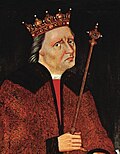 | February 1426 | 1460-1481 | 21 May 1481 | Schleswig | Dorothea of Brandenburg 28 October 1449 Copenhagen five children | First ruler of Schleswig, which was inherited from Holstein-Rendsburg. Also King of Denmark and of the Kalmar Union. |
| John I (Hans) |  | 2 February 1455 | 1481-1513 | 20 February 1513 | Schleswig | Christina of Saxony 6 September 1478 Copenhagen five children | Ruled jointly in Schleswig, John and Frederick, brothers, ruled together, and after the death of John, Frederick, kept the co-rulership with his nephew, Christian II. In 1523 the latter was deposed in both Denmark and Schleswig. They were also in succession Kings of Denmark: John 1481–1513, Christian 1513–23, Frederick 1523–33. John and Christian were also Kings of the Kalmar Union. |
| Frederick I (Frederik 1.) |  | 7 October 1471 | 1490-1533 | 20 February 1533 | Schleswig | Anna of Brandenburg 10 April 1502 Stendal two children Sophie of Pomerania 9 October 1518 Kiel six children | |
| Christian II the Tyrant (Christian 2.) |  | February 1426 | 1513-1523 | 21 May 1481 | Schleswig | Isabella of Austria 12 August 1515 Copenhagen six children | |
| Christian III (Christian 3.) | 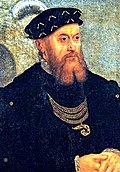 | 12 August 1503 | 1533-1544 | 1 January 1559 | Schleswig | Dorothea of Saxe-Lauenburg 29 October 1525 Lauenburg five children | Christian was also King of Denmark. In 1544 divided Schleswig with his half-brothers. John received Schleswig-Holstein-Haderslev, and Adolph Schleswig-Holstein-Gottorp. |
| 1544-1559 | Schleswig-Schleswig | ||||||
| John II the Elder |  | 21 June 1521 | 1544-1580 | 1 October 1580 | Schleswig-Holstein-Haderslev | Unmarried | |
| Adolph |  | 25 January 1526 | 1544-1586 | 1 October 1586 | Schleswig-Holstein-Gottorp | Christine of Hesse 17 December 1564 Schleswig ten children | |
| Haderslev divided between Schleswig and Gottorp | |||||||
| Frederick II (Frederik 2.) | 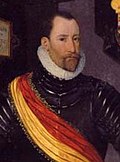 | 1 July 1534 | 1559-1588 | 4 April 1588 | Schleswig-Schleswig | Sophie of Mecklenburg-Güstrow 20 July 1572 Copenhagen eight children | Also King of Denmark. |
| Frederick II | 21 April 1568 | 1586-1587 | 15 June 1587 | Schleswig-Holstein-Gottorp | Unmarried | Died without descendants. He was succeeded by his brother. | |
| Philip |  | 10 August 1570 | 1587-1590 | 18 October 1590 | Schleswig-Holstein-Gottorp | Unmarried | Died without descendants. He was succeeded by his brother. |
| Christian IV (Christian 4.) | 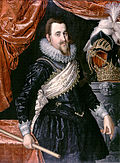 | 12 April 1577 | 1588-1648 | 28 February 1648 | Schleswig-Schleswig | Anne Catherine of Brandenburg 27 November 1597 Haderslev seven children Kirsten Munk 31 December 1615 Copenhagen (morganatic) twelve children | Also King of Denmark. |
| John Adolph |  | 27 February 1575 | 1590-1616 | 31 March 1616 | Schleswig-Holstein-Gottorp | Augusta of Denmark 30 August 1596 Copenhagen eight children | |
| Frederick III |  | 22 December 1597 | 1616-1659 | 10 August 1659 | Schleswig-Holstein-Gottorp | Marie Elisabeth of Saxony 21 February 1630 Dresden sixteen children | |
| Frederick III (Frederik 3.) |  | 18 March 1609 | 1648-1670 | 9 February 1670 | Schleswig-Schleswig | Sophie Amalie of Brunswick-Lüneburg 1 October 1643 Glücksburg eight children | Also King of Denmark as Frederick III. |
| Christian Albert |  | 3 February 1641 | 1659-1695 | 6 January 1695 | Schleswig-Holstein-Gottorp | Frederica Amalia of Denmark 24 October 1667 Glücksburg four children | |
| Christian V (Christian 5.) | 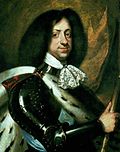 | 15 April 1646 | 1670-1699 | 25 August 1699 | Schleswig-Schleswig | Charlotte Amalie of Hesse-Kassel 25 June 1667 Nykøbing Falster eight children | Also King of Denmark. |
| Frederick IV |  | 18 October 1671 | 1695-1702 | 19 July 1702 | Schleswig-Holstein-Gottorp | Hedvig Sophia of Sweden 12 May 1698 Karlberg one child | |
| Frederick IV (Frederik 4.) | 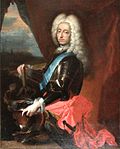 | 11 October 1671 | 1699-1730 | 12 October 1730 | Schleswig-Schleswig (until 1713) Schleswig (after 1713) | Louise of Mecklenburg-Güstrow 5 December 1695 Copenhagen five children Elisabeth Helene von Vieregg 26 September 1703 (morganatic and bigamous) one child Anne Sophie Reventlow 4 April 1721 Copenhagen three children | Also King of Denmark as Frederick IV. In 1713 reunited Schleswig. |
| Charles Frederick | 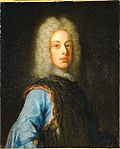 | 30 April 1700 | 1702-1739 | 18 June 1739 | Schleswig-Holstein-Gottorp (until 1713) Holstein-Gottorp (after 1713) | Anna Petrovna of Russia 21 May 1725 St Petersburg one child | |
| Christian VI (Christian 6.) |  | 30 November 1699 | 1730-1746 | 6 August 1746 | Schleswig | Sophie Magdalene of Brandenburg-Kulmbach 7 August 1721 Pretzsch three children | Also King of Denmark. |
| Charles Peter Ulrich |  | 21 February 1728 | 1739-1762 | 17 July 1762 | Holstein-Gottorp | Sophie Augusta of Anhalt-Zerbst 21 August 1745 St Petersburg one child | He later ascended as Peter III of Russia. |
| Frederick V (Frederik 5.) |  | 31 March 1723 | 1746-1766 | 14 January 1766 | Schleswig | Louise of Great Britain 11 December 1743 Altona five children Juliana Maria of Brunswick-Wolfenbüttel 8 July 1752 Hillerød one son | Also King of Denmark as Frederick V. |
| Paul I |  | 1 October 1754 | 1762-1773 | 23 March 1801 | Holstein-Gottorp | Wilhelmina Louisa of Hesse-Darmstadt 20 September 1773 St Petersburg no children Sophie Dorothea of Württemberg 7 October 1776 St Petersburg ten children | He later succeeded his mother, Catherine the Great, Empress of Russia. |
| Gottorp reunited with Schleswig | |||||||
| Christian VII (Christian 7.) |  | 29 January 1749 | 1766-1773 | 13 March 1808 | Schleswig | Caroline Matilda of Great Britain 8 November 1766 Copenhagen two children | Also King of Denmark. In 1773 reunited Schleswig and Holstein. |
| 1773-1808 | Schleswig and Holstein | ||||||
| Frederick VI (Frederik 6.) | 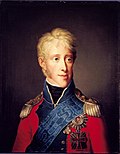 | 28 January 1768 | 1808-1839 | 8 December 1839 | Schleswig and Holstein | Marie Sophie of Hesse-Kassel 31 July 1790 Schleswig eight children | Also King of Denmark as Frederick VI. |
| Christian VIII (Christian 8.) |  | 18 September 1786 | 1839-1848 | 20 January 1848 | Schleswig and Holstein | Charlotte Frederica of Mecklenburg-Schwerin 21 June 1806 Ludwigslust two children Caroline Amalie of Schleswig-Holstein-Sonderburg-Augustenburg 22 May 1815 Augustenborg no children | Also King of Denmark. |
| Frederick VII (Frederik 7.) | 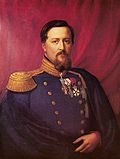 | 6 October 1808 | 1848-1863 | 15 November 1863 | Schleswig and Holstein | Vilhelmine Marie of Denmark 1 November 1828 Copenhagen (annulled 1837) no children Caroline Mariane of Mecklenburg-Strelitz 10 June 1841 Neustrelitz (annulled 1846) no children Louise Rasmussen 7 August 1850 Hillerød (morganatic) no children | Also King of Denmark as Frederick VII. |
| Christian IX (Christian 9.) |  | 8 April 1818 | 1863-1864 | 29 January 1906 | Schleswig and Holstein | Louise of Hesse-Kassel 26 May 1842 Copenhagen six children | He was from the Schleswig-Holstein-Sonderburg-Glücksburg branch of the Oldenburgs. Also King of Denmark. In 1864 the duchy was annexed to the Austrian Empire and the Kingdom of Prussia. |
In 1864, following the Second Schleswig War, the Duchies of Schleswig and Holstein were ceded by the Danish King and were ruled in a joint condominium by Austria and Prussia. Following the defeat of Austria in the Austro-Prussian War in 1866, they were annexed by Prussia and were formed into the new Prussian Province of Schleswig-Holstein, part of Germany since 1870.


